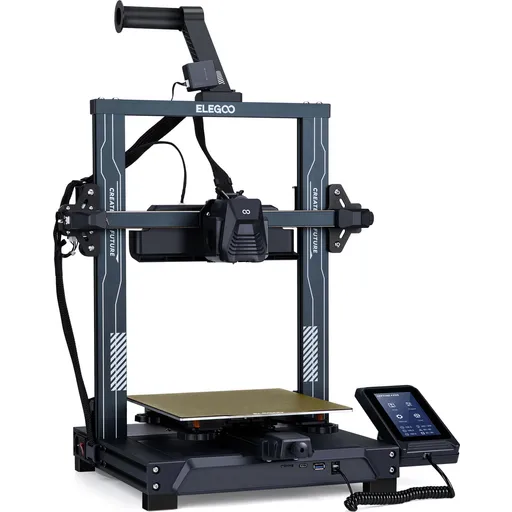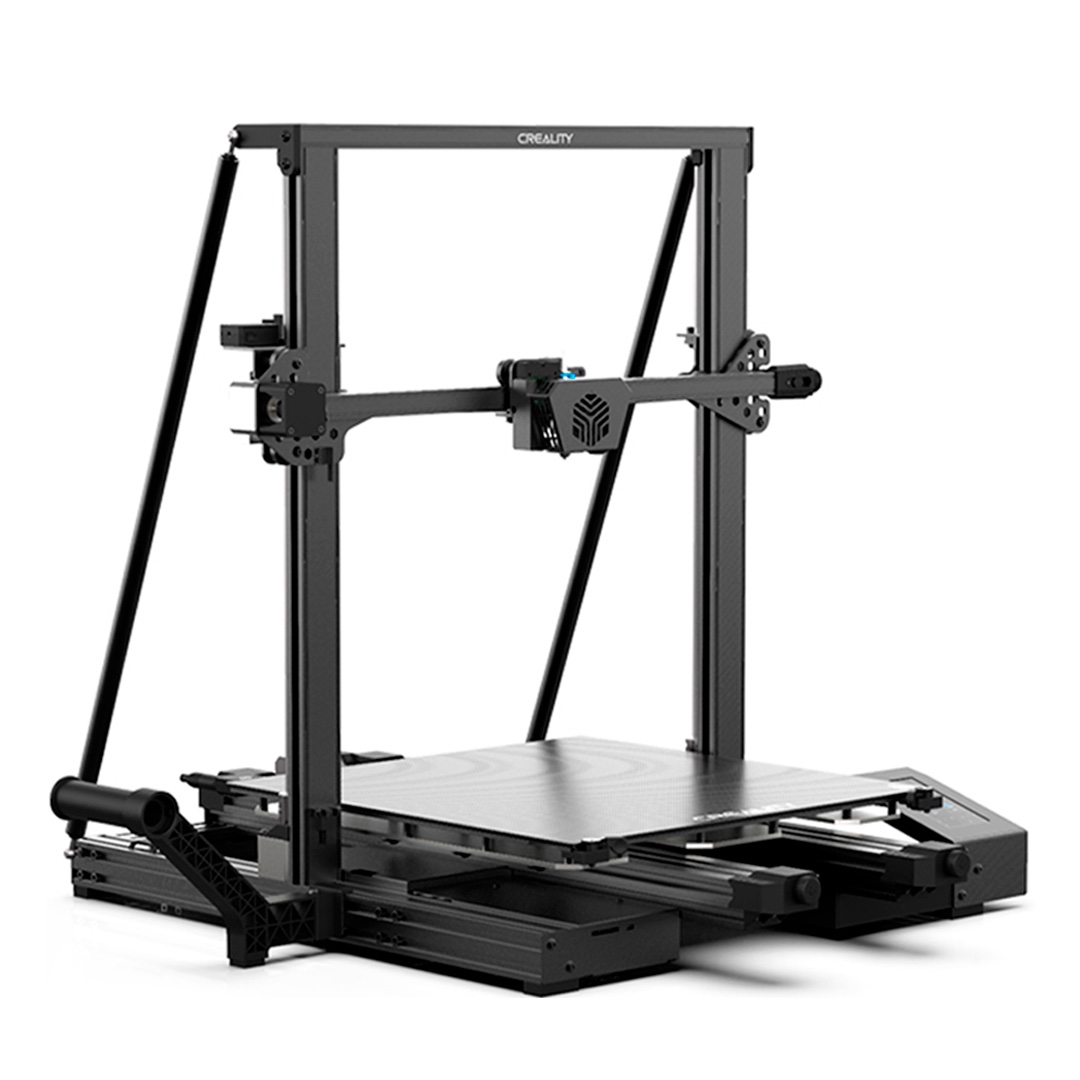Compare Neptune 4 PRO vs CR 6 Max
Comparison between the best 3D printers
Choose the best 3D printer at the best price. The cheapest 3D printers are here.
Buy a 3D printer here with 3D Fila.
 |
 |
|
| Model | Neptune 4 PRO |
CR 6 Max |
| Printing Material | Filament | Filament |
| Buy Filament for Elegoo Neptune 4 PRO | Buy Filament forCreality 3D CR 6 Max | |
| Estimated price | $359,00 | $700,00 |
| Manufacturer | Elegoo | Creality 3D |
| Release Year | 2023 | 2021 |
| Print Volume [mm] | 225x225x265 | 400x400x400 |
| Printer Size [mm] | 475x445x515 | 725x640x691 |
| Weight [kg] | 8,9 | 14 |
| Power Loss Recovery | YES | YES |
| Enclosed printer | NO | NO |
| Bed Leveling | Automatic | Automatic |
| Filament End Sensor | YES | YES |
| Bed type | Heated | Heated |
| Power supply system | Direct Drive | Bowden |
| Standard nozzle | 0,4 | 0,4 |
| Maximum Nozzle Temperature [°C] | 300 | 260 |
| Maximum Bed Temperature [°C] | 110 | 90 |
| Maximum printing speed [mm/s] | 500 | 100 |
| Filament holder | YES | YES |
| Camera for supervision | NO | NO |
| Recommended filaments | PLA, PLA+, TPU, PETG, Nylon, ABS | PLA, PETG |
| Recommended slicers | Bambu Studio, Super Slicer, Cura, Prusa Slicer, Orca | Cura, Simplify, Slic3r, IdeaMaker |
| Maximum Resolution [mm] | 0,1 | 0,1 |
| Processor | ARM 64 bit | |
| Display | Touchscreen 4,3'' | Display touchscreen 4,3'' |
| Power Supply | 310 W | 110/220V / 500W |
| Connectivity | USB, microSD | SD / USB |
| Operating systems | Windows, Linux, Macbook | Windows, Mac, Linux |
| Date of registration in the system | 2024-07-02 | 2022-11-04 |
| Release date | 2023 | 2021 |
| Extra features | The Elegoo Neptune 4 Pro stands out for its advanced features, including pre-installed Klipper firmware, a dual-gear direct extruder with a 5.2:1 ratio, a high-temperature nozzle (up to 300°C), a flexible magnetic PEI platform, efficient cooling fans, and a 121-point auto-leveling system. The printer also features a 4.3-inch touchscreen interface, dual linear bars on the X and Y axes, and a segmented heated bed for energy savings. | Crealitys CR-6 Max printer offers a large 400 x 400 x 400mm build area, perfect for larger projects without dividers. Its auto-leveling system and force sensor simplify setup. It has a 4.3-inch touchscreen and convenient features like a tool drawer and filament holder. Plus, its modular hotend, redesigned extruder, and silicon carbide-coated build plate improve print quality. |
| Support for multiple colors and materials (AMS and CFS) | NO | NO |
Notes * |
||
| Cost-benefit | 7 / 10 | 6 / 10 |
| Hardware | 2.8 / 10 | 2 / 10 |
| Tela | . | . |
| Print volume | 3 / 10 | 4 / 10 |
| Performance | 4 / 10 | 1 / 10 |
Conclusion |
| In comparing the Elegoo Neptune 4 PRO and the Creality 3D CR-6 Max, several factors emerge that could influence a potential buyer's decision. The Elegoo Neptune 4 PRO is positioned as a budget-friendly option while still offering impressive features. With a print volume of 225x225x265 mm, it supports a variety of filaments and has a higher maximum nozzle temperature of 300°C, making it versatile for different materials. Its lightweight design and efficient power supply contribute to a better cost-benefit ratio, showcasing a good balance between performance and affordability. Additionally, the inclusion of advanced features such as a flexible magnetic PEI platform, efficient cooling fans, and a robust auto-leveling system enhances its appeal for users looking for quality prints without breaking the bank. On the other hand, the Creality 3D CR-6 Max offers a larger print volume of 400x400x400 mm, catering to users who require the ability to print larger models. While its price is significantly higher, the printer includes features like a modular hotend and a silicon carbide-coated build plate, which can improve print quality and ease of use. However, it falls short in terms of maximum printing speed and overall performance metrics, which may deter users who prioritize efficiency. In conclusion, for hobbyists or individuals seeking a reliable and affordable 3D printing experience, the Elegoo Neptune 4 PRO emerges as the superior choice due to its advanced features, better cost-benefit ratio, and versatility with various materials. Conversely, the Creality 3D CR-6 Max may appeal to those specifically needing a larger build volume, but its higher cost and less favorable performance metrics make it less attractive overall. Each printer serves distinct needs, and the best choice ultimately depends on the specific requirements and budget of the user. |

